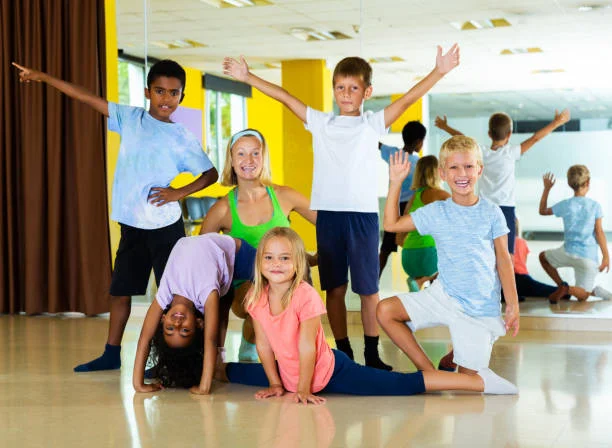The Power of Physical Education and Health

Introduction
In today’s fast-paced world, where technology dominates our lives, it’s more important than ever to recognize the significance of physical education and health. Physical knowledge not only promotes physical fitness and well-being but also plays a vital role in shaping our minds and developing essential life skills. This article delves into the importance of physical knowledge, the integration of health education, challenges faced, effective strategies, and the future of this critical discipline.
Importance of Physical Education

Physical Fitness and Health Benefits
One of the primary reasons physical education is crucial is its contribution to physical fitness and overall health. Engaging in regular physical activity helps combat obesity, reduce the risk of chronic diseases, and improve cardiovascular health. Through physical knowledge, students learn about the importance of exercise and are encouraged to lead active and healthy lifestyles.
Cognitive Development
Physical knowledge goes beyond the physical aspect and positively impacts cognitive development. Research has shown that physical activity stimulates brain function, enhancing memory, attention span, and academic performance. By participating in activities that require critical thinking and problem-solving, students develop their cognitive abilities, leading to improved learning outcomes.
Social and Emotional Skills
Physical knowledge and education provides an ideal setting for students to interact and develop essential social and emotional skills. Through team sports and group activities, students learn cooperation, teamwork, and communication. They also develop resilience, perseverance, and self-confidence. These skills are transferable to various aspects of life and contribute to building strong, well-rounded individuals.
Integrating Health Education

Promoting Healthy Lifestyles
To create a holistic approach to well-being, physical education should integrate health education. By educating students about nutrition, the importance of a balanced diet, and healthy lifestyle choices, we equip them with knowledge and skills to make informed decisions. Teaching them to prioritize self-care and establish healthy habits sets the foundation for a lifetime of well-being.
Nutrition and Wellness Education
Incorporating nutrition and wellness education within physical knowledge and education programs is essential to foster healthy habits. Teaching students about the nutritional value of different foods, meal planning, and understanding portion sizes empowers them to make healthier food choices. Educating students about stress management techniques, mindfulness, and overall mental well-being is equally important.
Challenges and Solutions
Lack of Funding
One of the primary challenges faced in physical education is the lack of funding. Many schools struggle to allocate sufficient resources to maintain well-equipped facilities, purchase sports equipment, and hire qualified education instructors. Advocating for increased funding and partnerships with local communities and organizations can help overcome this obstacle.
Limited Resources
Another challenge is the limited resources available for physical knowledge providing programs. Schools may have limited space or inadequate
equipment, making it challenging to offer a diverse range of activities. However, creative solutions such as utilizing outdoor spaces, partnering with community sports clubs, and seeking donations of equipment can help overcome these limitations.
Lack of Time and Attention
In an increasingly busy curriculum, physical knowledge and education often faces the challenge of limited time and attention. With a focus on core academic subjects, physical knowledge may be deprioritized or shortened. However, recognizing the importance of physical and mental well-being, schools can integrate physical knowledge into other subjects, incorporate short physical activity breaks throughout the day, or extend the school day to allow for dedicated education time.
Strategies for Effective Physical Education

Individualized Instruction
Every student is unique, and physical knowledge should cater to their individual needs and abilities. Implementing individualized instruction ensures that students receive the appropriate level of challenge and support. By differentiating activities and providing personalized feedback, physical education instructors can maximize student engagement and learning outcomes.
Incorporating Technology
Technology can be a valuable tool in enhancing physical knowledge. Fitness trackers, mobile apps, and interactive fitness equipment can make physical activity more engaging and track progress. Virtual reality and augmented reality can transport students to different environments, providing immersive and interactive experiences. Integrating technology into physical knowledge helps bridge the gap between traditional exercise and the digital world, making it more appealing to tech-savvy students.
Collaboration and Teamwork
Promoting collaboration and teamwork is vital in physical education. Team sports and group activities foster cooperation, communication, and problem-solving skills. By organizing team-building exercises, group projects, and cooperative games, physical knowledge instructors can create an inclusive and supportive environment where students learn to work together and value each other’s contributions.
Future of Physical Education

The future of physical education is promising, as society becomes more aware of the importance of holistic well-being. With advancements in technology, physical knowledge is likely to evolve to incorporate virtual reality simulations, wearable fitness devices, and interactive fitness platforms. Additionally, there is an increasing emphasis on inclusive physical knowledge, ensuring that students of all abilities have access to quality physical activity and education.
Conclusion
Physical education is not just about exercise; it is a powerful tool for building strong bodies and minds. It promotes physical fitness, cognitive development, and social-emotional skills. By integrating health education, schools can equip students with the knowledge and skills needed for a healthy and balanced lifestyle. Despite challenges such as funding, limited resources, and time constraints, effective strategies like individualized instruction, technology integration, and collaboration can enhance physical knowledge programs. The future holds great potential for further advancements in physical knowledge, ensuring that it continues to play a vital role in nurturing well-rounded individuals.
FAQs
1:Why is physical education important for students?
2:How can physical education integrate health education?
3:What are the challenges faced in physical education?
4:How can technology be incorporated into physical education?
5:What does the future hold for physical education?
For more valuable information stay connected


